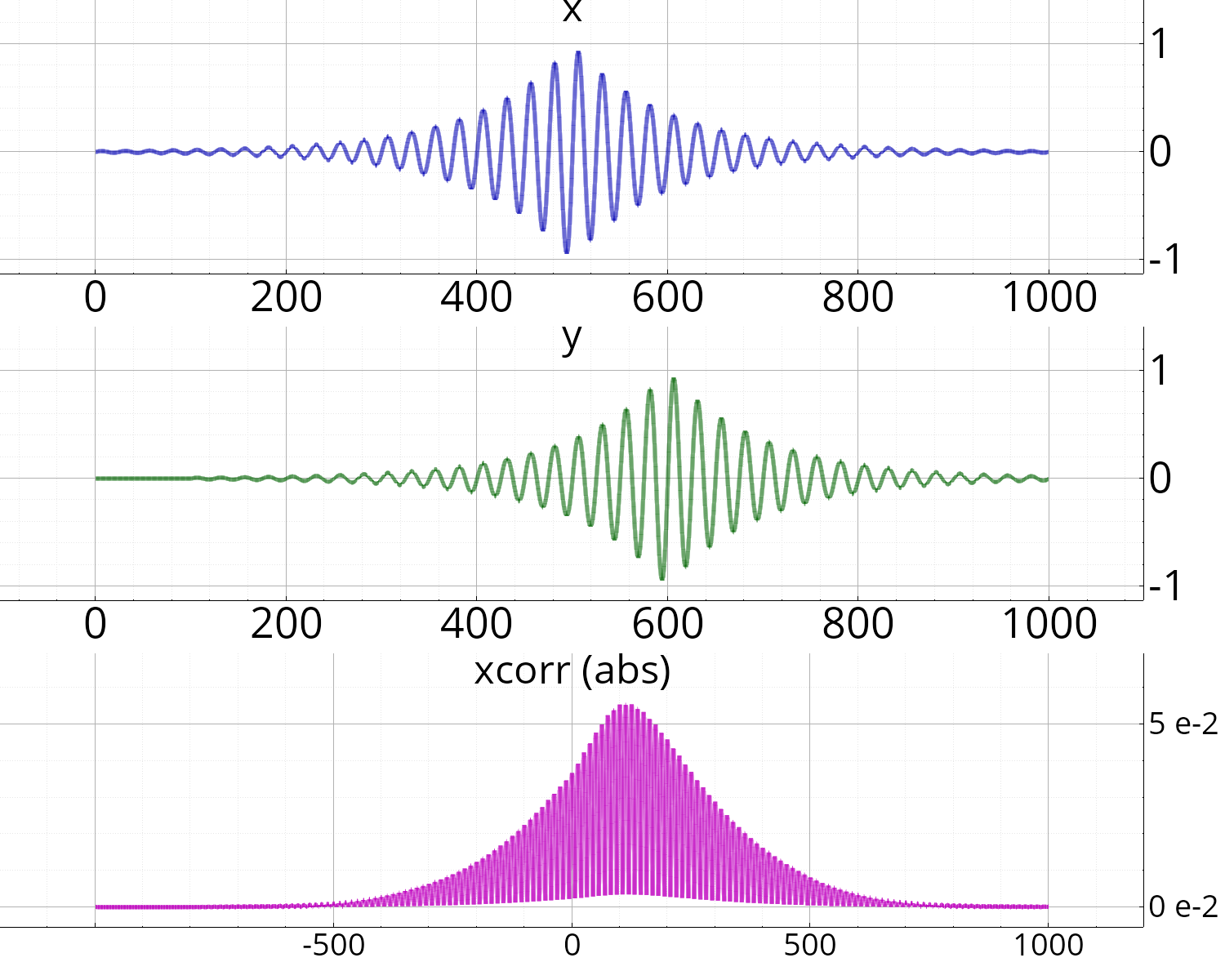xcorr
Unbiased correlation between two complex vectors.
Namespace: dsp::fourier
Prototype
auto xcorr(const Veccf &x, const Veccf &y=Veccf(), int m=-1)
Parameters
| x | First vector |
| y | Second vector (if not specified, the auto-correlation is computed) |
| m | Number of delays to be computed (if negative, then take \(m=N\)). |
Returns
First vector: index of time lags \(n\) (that is \(0, 1, ..., N-1\)), second vector: \(c_n\).
Description
Compute the correlation between 2 complex vectors (through FFT), that is, for negative lags ( \(\tau=-(m-1)\dots -1\)) :
Lags are sampled uniformly between \(-(m-1)\) et \(m-1\) :
- Note
- The vectors are implicitly zero-padded so as to be able to compute efficiently the correlation in the frequency domain.
Example
soit x = sigsin(0.04, 1000) * exp(-abs(linspace(-5,5,1000))),
y = délais(x, 100);
soit [lags, c] = xcorr(x, y);
Figures f;
f.subplot().plot(x, "b-" , "x" );
f.subplot().plot(y, "g-" , "y" );
f.subplot().plot(lags, abs(c), "m-" , "xcorr (abs)" );

